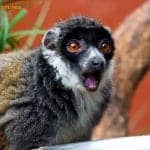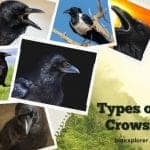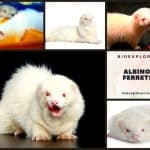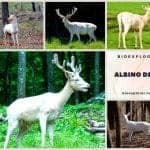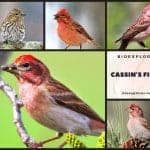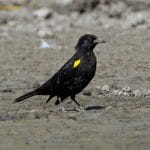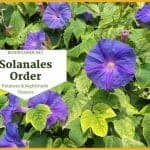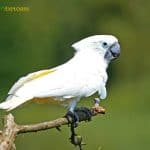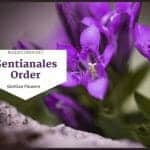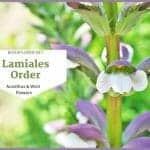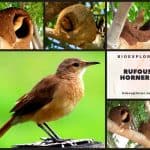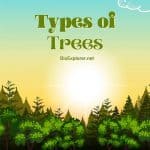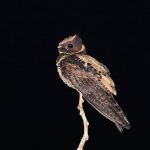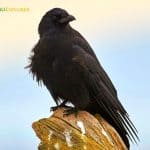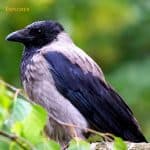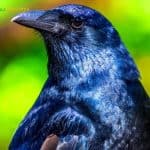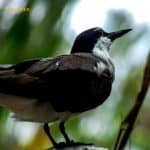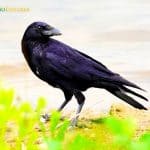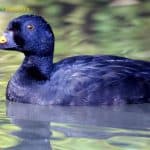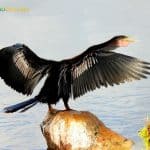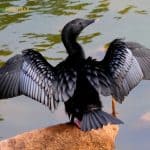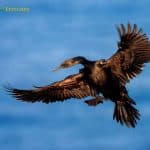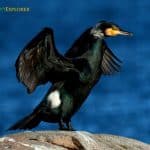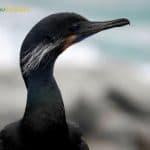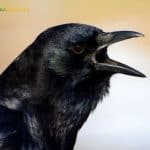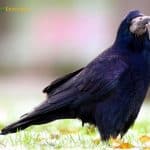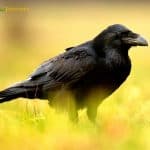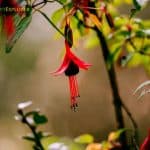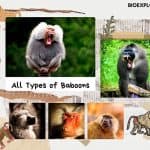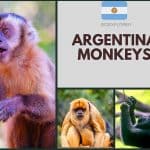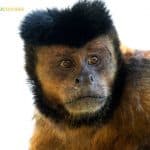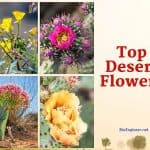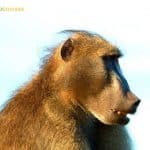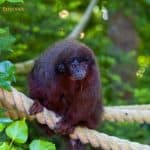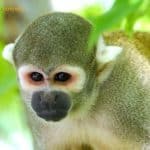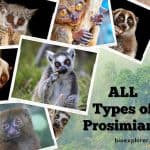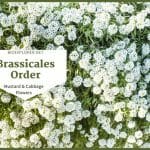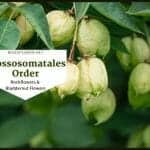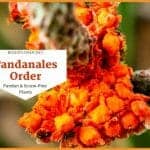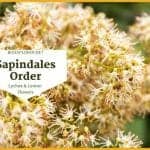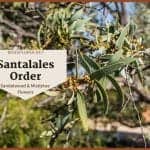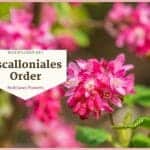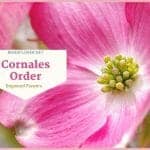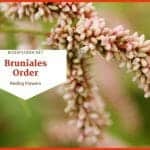dif birds - search results
If you're not happy with the results, please do another search
Gibraltar Monkeys
Gibraltar’s iconic Barbary macaques have roamed here 300+ years now, delighting visitors. Explore the history of Gibraltar monkeys on the Rock, their social behavior, role as a conservation priority species with ties to Britain’s fate.
Mongoose Lemur
Learn about the endangered mongoose lemur (Eulemur mongoz), a small Madagascar primate with red beards and bushy tails. Get fascinating facts on their rainforest habits, unique behaviors, seed dispersal ecology, and major threats driving their worrying decline.
Marmoset Monkeys
From the lush Amazon rainforests to the arid caatinga scrubs of northeastern Brazil, miniature marmoset monkeys swing through diverse New World landscapes. Explore all 24 species of marmoset monkeys here.
Types of Crows
The Corvidae family, renowned for its intelligence and adaptability, includes crows, ravens, rooks, jackdaws, magpies, and jays. Within this family, the genus Corvus encompasses the "true crows" - a group of 43 recognized crow species found on every continent except South America and Antarctica. These birds are characterized by their robust build, all-black or mostly black plumage, strong bills, and remarkable problem-solving abilities. Crows occupy diverse habitats, from forests and grasslands to cities and islands. Many species are highly social, form complex social structures, and display advanced tool use and vocal mimicry. Their ecological roles range from scavengers to seed dispersers, making them vital to many ecosystems.
Top 15 Genetics News of 2021
This Genetics news highlights the discoveries and innovations in Genetics in 2021. It emphasizes the genetic basis of various diseases and illnesses, including schizophrenia, aortic aneurysms, liver cancer, and other lifestyle diseases, the genetic basis of embryonic stem cell development and more. Explore top 15 Genetics news of 2021.
Albino Ferrets
Explore the intriguing world of Albino Ferrets - their unique genetics, characteristics, care needs, and challenges in the wild. Uncover the joy of owning one!
Albino Monkeys
Albino monkeys, also known as monkeys with albinism, lack pigmentation in their skin, hair, and eyes. Discover more about these unique creatures and their genetic condition.
Albino Deer: A Rare and Fascinating Genetic Mutation
Albino deer are extremely rare and fascinating genetic anomalies. This in-depth guide covers what albino deer are, why they're white, where they're found, major challenges they face, controversies surrounding them, seeing them in zoos, and reasons we find these mystical-looking white deer so captivating.
Cassin’s Finch
Learn about the Cassin's Finch, a unique songbird of western North American mountain forests. This adaptable finch has complex songs, nomadic habits, and thrives across diverse coniferous habitats. Gain insights into this little-known species' ecology and importance.
Yellow-winged Blackbird
The Yellow-winged Blackbird is a striking, stocky bird found in wetlands and reed beds across South America. Males are glossy black with bold yellow shoulder patches that are most visible in flight, while females are brown and streaked with a pale eyebrow. These blackbirds are rarely far from water, often forming small flocks and breeding colonially in reeds. They forage mainly on the ground for seeds, fruits, and insects, sometimes following livestock or farm machinery to catch disturbed prey. Fun fact: males perform acrobatic display flights and flocks will mob predators to drive them away.
Order Ericales / Heathers and Primrose Flowers
Ericales is comprised many economically important flowering plants like Brazil nuts, kiwifruit, and primrose. Ericales is very diverse, involving chiefly trees and terrestrial shrubs that are cosmopolitan in distribution. Some families of Ericales possess the ability for aluminum accumulation. Hardy kiwi, Orange jewelweed, wand plant, lama tree, and Octotillo flowers are some examples of Ericales.
Order Solanales / Potatoes & Nightshade Flowers
Solanales or the potato/nightshade order of the flowers belong to the core asterid clade, manifesting a global distribution. The plants of Solanales possess root stalks or tubers, simple, alternate, and exstipulate leaves, showy flowers, and typically 5-merous floral parts. The Solanales plants are monoecious, andromonoecious, or dioecious. Example species under Solanales order involve the highly cultivated flora of morning glory, potato, eggplant, and tomato.
August Birth Flowers
Delve into the rich history and symbolism of August birth flowers - Gladiolus and Poppy. Find out why they're perfect for birthdays this month!
White Cockatoo
Discover the breathtaking beauty of the White Cockatoo (Cacatua Alba), their characteristics, diet and several interesting fun facts about them here.
What Do Marine Biologists Do?
Discover how marine biologists unlock the mysteries of aquatic life and protect our oceans' delicate ecosystems. Immerse yourself in this captivating field today!
Order Gentianales / Gentian Flowers
The Gentianales (Gentians) is an order of flowering plants involving herbs, shrubs, undershrubs, lianas, and small trees primarily distributed worldwide. Plants of Gentianales mostly have opposite leaves, interpetiolar stipules, bisexual flowers, mostly fused sepals and petals, 4-5 stamens, and 2 carpels. Important species under Gentianales are coffee, periwinkle, oleander, and gentian.
Order Lamiales / Acanthus & Mint Flowers
Lamiales is an ordering of flowering plants with most members found worldwide. The species of the Lamiales usually have opposite leaves, bilaterally symmetrical and often bilabiate corolla, five petals fused into a tube, four or fewer fertile stamens, and a superior ovary with fused carpels. The mints, olive, bladderworts, and plantain are plants under the Lamiales order.
Hibiscus Varieties
Dive into the vibrant world of hibiscus! Explore 25+ stunning varieties, from rare native species to popular garden favorites. Learn about their unique characteristics, care tips, and fascinating facts. Perfect for gardeners and flower enthusiasts alike. Discover the beauty and diversity of these tropical treasures!
December Birth Flowers
Are you wondering about the special flower for those born in December? Look no further. This article reveals that December has two birth flowers: Holly and Narcissus (Paperwhite), each with unique symbolism.
Rufous Hornero
Explore the Rufous Hornero, South America's avian marvel. Dive into its unique habits, cultural significance, and conservation efforts. A birdwatcher's delight!
Types of Trees
Discover the diverse types of trees, from deciduous to evergreen. Enjoy vivid pictures, and learn their roles in ecosystems and their conservation efforts.
Great Eared Nightjar
In the heart of the night, when the world seems to hold its breath, the Great Eared Nightjar takes flight. This nocturnal bird, known scientifically as Lyncornis macrotis, is a captivating creature that has long intrigued ornithologists and nature enthusiasts.
Northwestern Crow
The Northwestern Crow is a mid-sized, all-black bird native to the Pacific coast from southern Alaska to northern Washington. It thrives in coastal habitats, intertidal zones, forest edges, and even urban areas, often foraging on beaches for clams, invertebrates, eggs, and carrion. Known for their intelligence, these crows use tools-dropping clams on rocks to break them open-and perform aerial acrobatics. They are highly social, forming large flocks in winter and engaging in noisy mobbing of predators. Northwestern Crows mate for life, nest in trees or shrubs, and young remain dependent on parents for several weeks.
Hooded Crow
The Hooded Crow is a medium-sized, two-toned corvid with a pale grey body and contrasting black head, wings, tail, and thigh feathers. Found across northern and eastern Europe and parts of the Middle East, it adapts well to woodlands, farmland, coasts, and cities. Hooded Crows are highly intelligent, known for using tools and dropping shells or nuts from heights to crack them open. Their omnivorous diet includes insects, small animals, grains, carrion, and human scraps. Hooded Crows often pair for life, and their harsh "kraa" call is a familiar sound in their range.
Fish Crow
The Fish Crow is a medium-sized, all-black bird with a subtle green-purple sheen, nearly identical in appearance to the American Crow but best distinguished by its nasal "uh-uh" call. Native to the eastern United States, Fish Crows are most often found near water-coasts, rivers, lakes, and marshes-but have expanded inland along river systems. Highly adaptable, they thrive in urban, suburban, and agricultural areas. Omnivorous and opportunistic,
Fish Crows eat everything from carrion and garbage to bird eggs, fruit, and small animals. These black birds often cache surplus food and are known for mobbing predators in groups.
Sooty Tern
The Sooty Tern is a large, striking seabird with black upperparts, white underparts, a white forehead, and a deeply forked tail. Found across tropical oceans worldwide, it spends most of its life at sea, sometimes remaining airborne for 3 to 10 years without landing, as it cannot float due to a lack of waterproofing oil in its feathers. Sooty Terns feed by skimming fish and squid from the ocean’s surface and rarely come to land except to breed in dense colonies on remote islands. Their loud, piercing calls and aerial courtship displays are characteristic of their nesting grounds.
Carrion Crow
The Carrion Crow is a medium-sized, glossy black bird native to Europe and Asia, recognized for its deep, guttural “kraa” call and solitary habits. Adaptable to a wide range of habitats-including woodlands, farmland, moors, coastal cliffs, and urban areas-it often perches in high places to survey its surroundings. Highly intelligent, Carrion Crows use tools, recognize human faces, and even cooperate with each other to hunt or defend territory. Their diet is varied, consisting of carrion, insects, seeds, fruit, and small animals. Offspring from previous years sometimes help parents feed new chicks.
Black Scoter
The Black Scoter is a chunky sea duck, with males easily recognized by their all-black plumage and a distinctive swollen yellow knob at the base of the bill. Females are dark brown with pale cheeks and throat. They breed in remote northern lakes and wetlands, mostly in Alaska and northern Canada, and winter along both Atlantic and Pacific coasts of North America. Black Scoters dive for food, feeding mainly on aquatic insects in freshwater and mollusks like clams and mussels in marine habitats. Black Scoters are monogamous, and their winter flocks can number in the thousands.
Anhinga
The Anhinga, also called the “snake bird” for its long, slender neck, is a large, mostly black water bird with a pointed yellow bill and silvery wing patches. Males have darker, glossy plumage, while females show a paler head and neck. Found in freshwater swamps, lakes, marshes, and slow-moving rivers from the southeastern U.S. to South America, Anhingas are expert divers, swimming underwater with only their head and neck exposed. Unlike most birds, they lack waterproofing oils, so they must spread their wings to dry after diving. Anhingas spear fish with their sharp bills and swallow them headfirst.
Little Cormorant
The Little Cormorant is a compact, all-black waterbird, typically 50–55 cm long, found across the Indian subcontinent and Southeast Asia. In breeding season, adults have glossy black plumage, sometimes with white facial spots and a small crest; in non-breeding season, plumage is browner with a white throat patch. This species thrives in wetlands, lakes, rivers, and estuaries, where it’s often seen diving for fish-its main food. Little Cormorants are highly social, roosting and nesting in colonies, sometimes alongside herons and egrets. After diving, Little Cormorants often perch with wings spread to dry.
Pelagic Cormorant
The Pelagic Cormorant is the smallest and most slender cormorant along the Pacific Coast, recognized by its long, thin neck and all-black plumage, with breeding adults showing white flank patches and short crests on the crown. Found from Alaska to Baja California and the Asian Pacific coast, it inhabits rocky shorelines, bays, and coastal cliffs, rarely venturing far from land. This species dives to depths over 130 feet to catch small fish and invertebrates, often foraging alone. Nests are built on narrow cliff ledges and reused for years.
Great Cormorant
The Great Cormorant is a large, heavyset waterbird with glossy black plumage, a thick neck, and a stout, hooked bill. Adults display a yellow throat patch and, during breeding season, develop white thigh patches and short white plumes on the head and neck. Found across Europe, Asia, Africa, and coastal North America, they inhabit rocky sea coasts, islands, and large inland lakes and rivers. Great Cormorants are expert divers, propelling themselves underwater with their feet to catch fish. After diving, they’re often seen perched with wings spread to dry. They nest in dense colonies, sometimes numbering thousands of pairs.
Brandt’s Cormorant
Brandt’s Cormorant is a large, black seabird found along the Pacific coast from Alaska to Baja California. It is recognized by its thick neck, long body, and, during breeding season, a striking cobalt-blue throat patch and wispy white facial plumes. These dark-feathered birds nest in colonies on rocky islands and coastal cliffs, often building large nests from seaweed and debris. Brandt’s Cormorants are excellent divers, capable of reaching depths over 200 feet to catch fish such as anchovies and herring. These black birds often forage in groups, working together to herd schools of fish for easier hunting.
American Crow
The American Crow is a large, glossy black bird recognized by its distinctive “caw” and confident walk. Common throughout North America, it thrives in a variety of habitats including forests, fields, towns, and cities. These birds are highly social, often living in family groups and gathering in large communal roosts during winter. American Crows are omnivorous and opportunistic, eating insects, seeds, small animals, carrion, and human food scraps. Notably intelligent, they are skilled problem solvers and quick learners. American Crows are curious, cooperative breeders, and adapt well to both urban and rural environments.
Rook
The Rook is a large, sociable black bird native to Europe and Asia, easily recognized by its bare, pale-grey face and cone-shaped head. It forms noisy colonies called rookeries, nesting high in tall trees near farmland, villages, or parks. Rooks forage in flocks, probing fields for grubs, worms, seeds, and grain, but also eat insects, small mammals, and carrion. Highly intelligent, they use tools and have excellent memories. Unlike crows, adult rooks show a whitish patch at the bill’s base. Some rookeries have been used for over a century.
Common Raven
The Common Raven is one of the largest and most widespread black songbirds, easily recognized by its all-black plumage, thick neck, shaggy throat feathers, and wedge-shaped tail. Found across the Northern Hemisphere, it thrives in diverse habitats-from forests and mountains to deserts and coastlines, and even near human settlements. Ravens are highly intelligent, known for problem-solving, tool use, and playful behaviors like aerial acrobatics and object games. They are omnivorous, eating everything from carrion and small animals to grains and human food scraps. Ravens can mimic sounds, including human speech, and often cache food for later use.
Top 27 Biology-themed Movies
Biology, in the simplest terms, is defined as the study of living organisms. The top 27 biology movies showcase biological concepts and other related scientific fields. Now, who says that you cannot learn while having fun simultaneously?
Qantuta
Cantua buxifolia is an evergreen shrub of the order Ericales. This plant can grow to a height of 13 feet and is a native of the high valleys of the Yungas and Andes mountains in western South America.
Baboons
Baboons are another breed of Old-world monkeys classified under the genus Papio. There are 6 types of baboons. Explore all about baboons here.
What Do Goldfinches Eat? Explore Goldfinch Diets, Hunting & Eating Habits
Goldfinches are mainly omnivores. Explore in detail what do Goldfinches eat by their types, hunting techniques, what eats Goldfinches & more.
What Do Orioles Eat? Explore Oriole Diets, Hunting & Eating Habits
Orioles are omnivorous birds grouped in 2 different families. Explore what do orioles eat, orioles diet by types, and what eats orioles here.
Argentinian Monkeys
Five different species spanning 3 genera of New World monkeys can be found in Argentina, though none of them are endemic to the country. These species are generally found in forested regions, mainly in provinces like Santa Fe, Chaco, and Formosa.
Guianan Brown Capuchin
The tufted capuchin (Sapajus apella), also called the pin monkey, Guianan brown capuchin, or black-headed capuchin is a New World monkey native to South America and the Caribbean islands of Margarita and Trinidad.
The Ultimate Guide to 25+ Spectacular Desert Flowers & Their Unique Adaptations
Desert Flowers: Approximately 1/3 of the earth's surface is deserts. Despite having prolonged periods without precipitation, severe temperature ranges, dry winds, and low humidity, the beautiful blooms of the desert have learned to survive the harsh environment and continue to bloom and provide colors to the desert.
Chacma Baboon
Like all other baboons, the Chacma baboon, the Cape baboon, belongs to the Old-World monkey family. Chacma baboons have a habit of flipping over rocks in search of food. So, it's pretty easy to spot where a group of Chacmas once foraged.
Bonnet Macaque
The Bonnet Macaque, also called Zati, is a species of macaque native to southern India. Bonnet macaques get their common name from a unique feature: a hood-like tuft of hair that extends from the top of their head, much like a tuft of dry grass. Their marble-round eyes look out into the world with a very expressive forehead.
Black Lion Tamarin
The black lion tamarin, also called the golden-rumped lion tamarin, is a lion tamarin native to the Brazilian state of Sao Paulo, almost exclusively in Morro do Diabo State Park. Its limited geographic range makes it the rarest of the New-World monkeys.
Bare-eared Squirrel Monkey
The bare-eared squirrel monkey also called the golden-backed squirrel monkey, is a subspecies of the Saimiri sciureus group native to the tropical forests and jungles of South and Central America. The bare-eared squirrel monkey differs from other species because it does not have ear tufts.
Prosimians
Prosimians are a grouping of primates currently made up of the species (both living and extinct) of two main taxonomic categories. Explore all types of prosimians here.
Order Oxalidales / Wood Sorrel Flowers
Oxalidales (Wood sorrel) order of flowering plants is annuals, perennial herbs, lianas, shrubs, and trees distributed in temperate and tropical regions. Oxalidales plants have compound leaves, actinomorphic and bisexual flowers, usually 4-5 sepals and petals.
Brassicales / Mustard & Cabbage Flowers
Brassicales is an order of flowering plants comprising trees, herbs, shrubs, or lianas primarily distributed worldwide. Brassicales have glucosinolates or mustard oils, small stipules, often bisexual flowers, inflorescences in racemose, and nectaries found between the petals and the stamens. The known plants of Brassicales are mustard, cabbage, capers, mignonette, and nasturtiums.
Order Crossosomatales / Rockflowers
Crossosomatales is a small order of flowering plants consisting of woody shrubs and trees. It is distributed in various regions across the northern and southern hemispheres. Crossosomatales or the Rockflower order is placed under Rosid eudicots and consists of 7 families and 12 genera.
Order Poales / Grass, Bamboo and Pineapple
Poales species are monocots with two-ranked leaves, much reduced flowers, dry and small stigma, and well-developed style. The Poales flowers are unisexual, bisexual, or sterile and pollination of the members is via anemophily or entomophily. The famous bamboo, pineapple, Yellow-eyed grass, Stream Bogmoss, and Palmiet are found under Poales order.
Order Pandanales / Pandan & Screw-Pine Plants
Panama hat palm or screw-pines order of flowers is called Pandanales, which range from arborescent plants of tropical coastal areas and rainforests to the forest floor’s twining herbs, lianas, and saprophytic herbs. Hala tree, Rainforest Screw Pine, Paca, Purple Vellozia, Creeping vellozia, and Wild Asparagus are examples of Pandanales order flowers.
Order Buxales / Boxwood Flowers
The whole range of boxwood flowers belong to order Buxales. Order Buxales is the eudicot flowering plant consisting of evergreen shrubs or trees. Members of Buxales are usually monoecious with simple, non-sheathing, and estipulate leaves. Balearic box, Korean boxwood, Japanese Pachysandra, and Allegheny spurge are excellent garden flowers from this order.
Order Sapindales / Lychee and Lemon Flowers
Order Sapindales belongs to the dicotyledonous flowering species which are distributed in the tropics and the temperate regions. Most plants of Sapindales are woody with resin ducts in their bark or wood, compound or lobed leaves, and polypetalous flowers. They are polygamous, with most bisexual flowers functionally unisexual. Among the critical species involve cashew, mahogany, lemon, and lychee.
Order Santalales / Sandalwood & Mistletoe Flowers
Santalales is one of the most prominent groups of parasitic flowering plants, with species distributed worldwide. Santalales involve plants that form haustorium to penetrate the host's barks and roots, plants that undergo photosynthesizing activities in the stem, and members with usually simple and exstipulate leaves. Sandalwood and mistletoes are just two of the known plants under Santalales.
Order Escalloniales / Redclaws & Laurel Flowers
Escalloniales is an order of eudicotyledonous flowers placed under the clade of campanulidas. Being predominantly distributed in the southern hemisphere, Escalloniaceae plants possess simple, petiolate, exstipulate leaves, regular flowers mostly in racemose, and pentamerous floral parts. Redclaws, Chachacoma, Native laurel, Polyosmo leratii and white alder are among the beneficial Escalloniacea species.
Order Cornales / Dogwood Flowers
The dogwood order of flowers, Cornales, is basal among asterids. Cornales is relatively small, but members are morphologically diverse and are cosmopolitan in distribution. Cornales plants are mostly woody with simple or compound leaves, small flowers, floral parts in multiples of four, and generally bisexual. Many of the species of Cornales, like the flowering dogwood and Lindley’s blazing star are of ornamental value.
Order Bruniales / Redleg & Spiny Desfontainia Flowers
The Order Bruniales plants typically possess small, persistent, and simple leaves, small to medium-size flowers, mostly 5-merous in the calyx and corolla, and usually clawed petals. The members of Bruniales are hermaphrodites and undergo pollination via insects and hummingbirds. Known example flowering species are redlegs, common cotton bush, Cone stompie and the spiny desfontainia.



